03/16/23
Watch the 2023 Western Prosperity Roundtable

As the COVID-19 pandemic untethered workers from physical offices and put a premium on space and outdoor access, rural communities throughout the West experienced significant growth. For many of these communities, the scale and speed of growth has strained infrastructure and capacity.
The 2023 Western Prosperity Roundtable convened community members, policymakers, and experts from around the West to discuss strategies for ensuring sustainable development and increasing community resources so that these communities can flourish.
Topics included approaches for adopting telemedicine, improving childcare, increasing the supply of affordable housing, expanding workforce development, building for post-disaster resiliency, and accessing and implementing federal funds.
Montana Governor Greg Gianforte, the host of this year's forum, moderated a panel on affordable housing with experts from the Mercatus Center, the Montana Department of Environmental Quality, the Washington State Department of Commerce, the Utah Department of Workforce Services, and the Colorado Department of Local Affairs.
During the panel, Governor Gianforte discussed a slate of bills he recently signed to overhaul housing mandates and zoning regulations, encourage the development of denser housing, and streamline permitting reviews.
"Each and every day I'm focused on opening doors of greater opportunity for Montanans so they can thrive, and prosper, and achieve the American dream… and owning a home is foundational to the American dream," he told the crowd at the AC Hotel. “I am proud of what we've accomplished in a very bipartisan way through the efforts we put forward [in the Legislature this year], but there's no question we need to do more.” [See below for additional information on the Housing Development panel].
Watch recordings from all the panels by clicking on the session titles below, or by visiting WGA’s YouTube channel.
Roundtable 1: Seeking Community Childcare Solutions
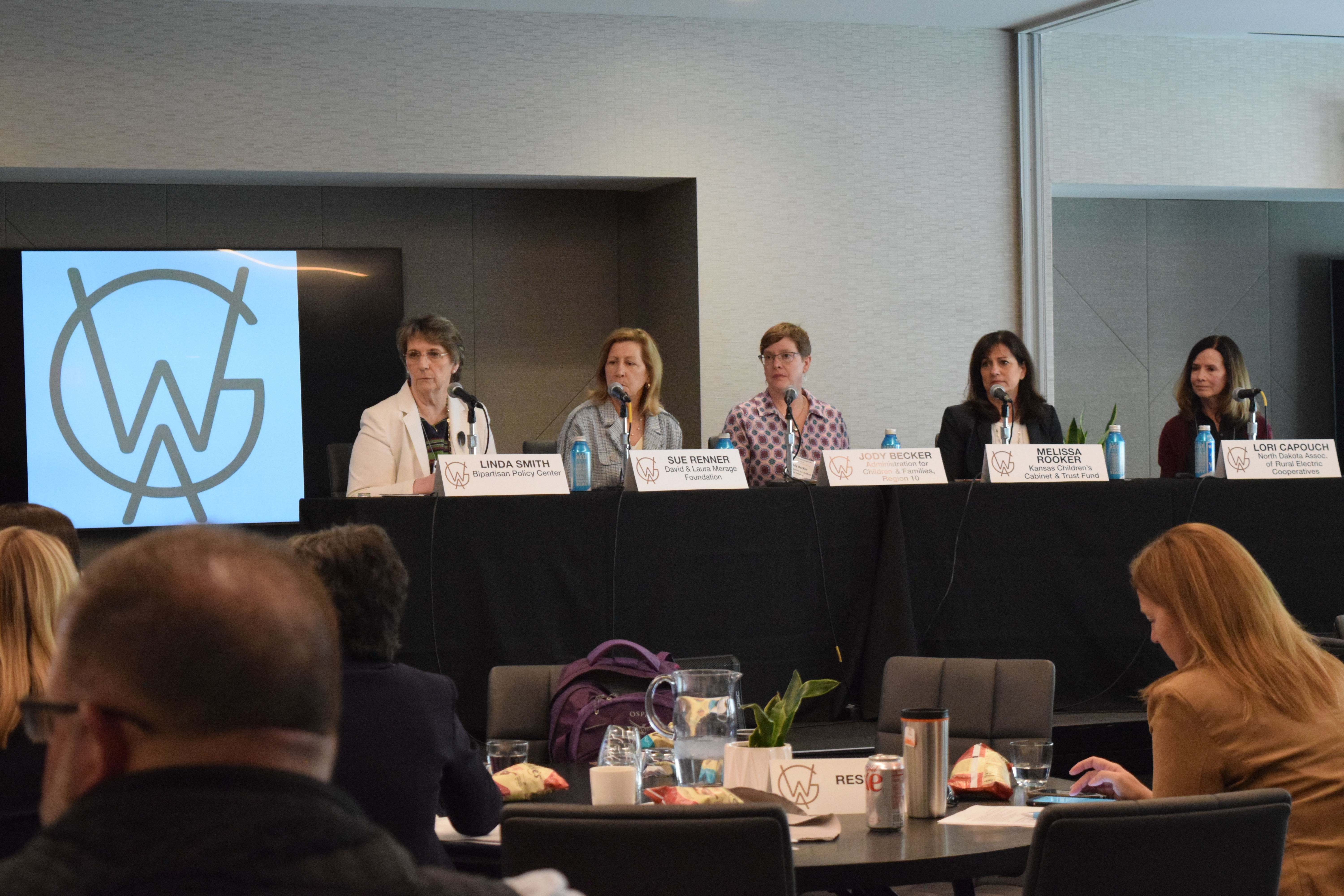
These strategies include funding start-up grants for employers to develop in-house childcare programs, fostering public-private partnerships to improve pay for childcare providers, and using state land to build new childcare facilities.
“[Childcare] is failing because it’s so constrained. It’s constrained by what parents can pay – keep in mind parents are in their lowest earning years when they have little ones – and it’s constrained by the business of childcare – these are small independent businesses,” Renner said. “Our federal, state, and local combined investment in childcare is $500 per infant. Compare that to K-12, which is $12,800… so we need to right-size our investment in young children in this country.”
In the absence of federal funding, Lori Capouch, Rural Development Director of the North Dakota Association of Rural Electric Cooperatives (NDAREC), described the effectiveness of employer-supported cooperative models to bolster childcare capacity. Read more about the work that NDAREC is doing to develop childcare cooperative programs here.
Panelists:
- Sue Renner, Executive Director, David and Laura Merage Foundation
- Jody Becker, Region Jody Becker 10 Regional Administrator, Administration for Children and Families
- Melissa Rooker, Executive Director, Kansas Children’s Cabinet and Trust Fund
- Lori Capouch, Rural Development Director, North Dakota Association of Rural Electric Cooperatives
- Moderator: Linda K. Smith, Director of the Early Childhood Initiative, Bipartisan Policy Center
Roundtable 2: Telehealth – From Crisis Response to Mainstream Care
Health care access has also been a challenge in rural areas, but the good news, as Dr. Lisa Finkelstein, the Medical Director of Telehealth at St. John’s Health, said, is that the COVID-19 pandemic “triggered this innovation of telemedicine” and the establishment of infrastructure which can now be leveraged to increase access for rural communities.
While all of the panelists discussed critical regulatory changes that would allow providers to offer telemedicine across state boundaries and meet patients where they are, they also noted that policymakers and providers need to understand the scope of what we can accomplish with virtual care. This will help ensure that policy is developed that addresses current and future innovation and providers are prepped and ready to adopt new technology.
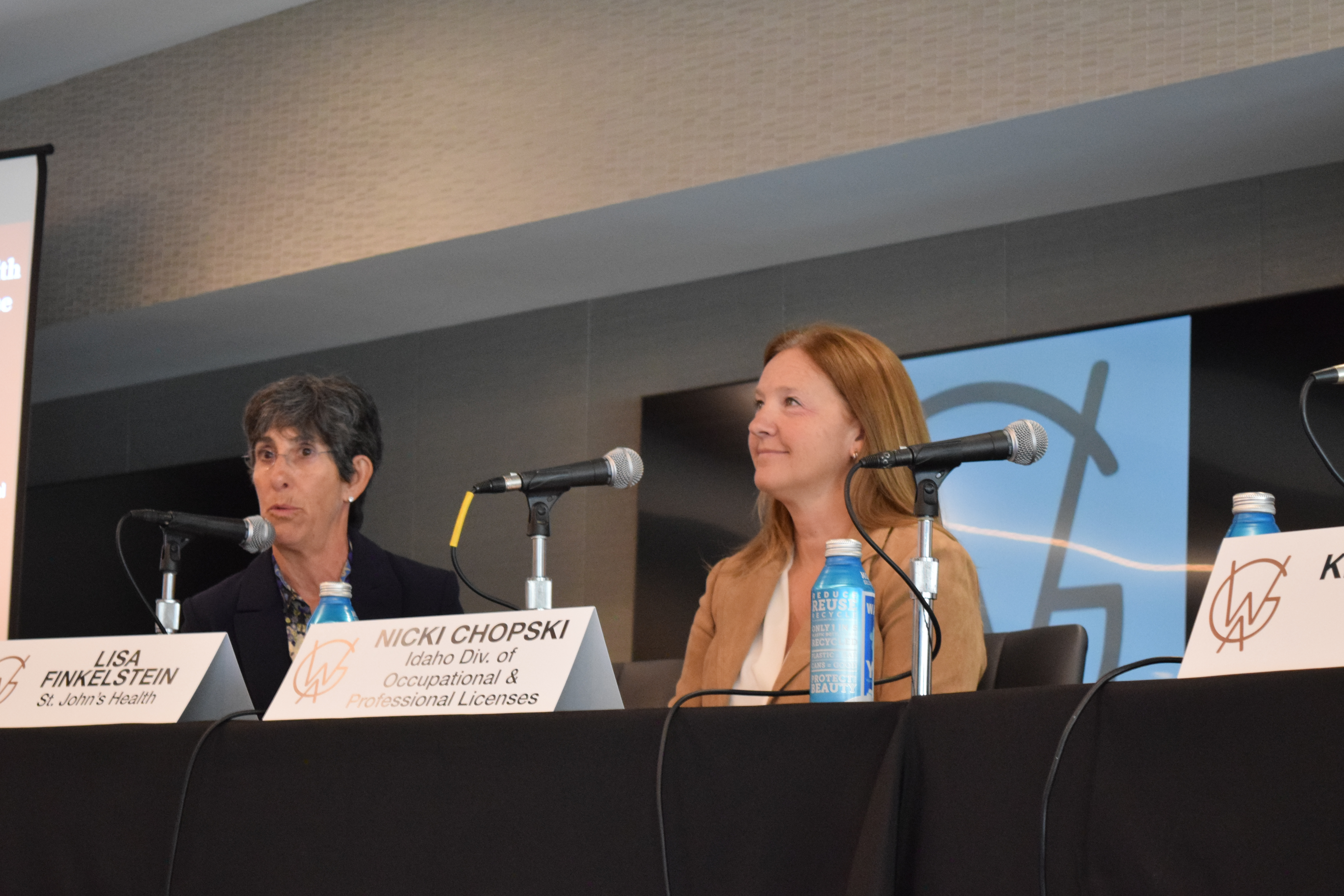
“It's not turning over all of the knowledge and skills and training that health care professionals have,” Nicki Chopski, the Executive Officer for Boards of Medicine, Nursing, and Pharmacy at the Idaho Division of Occupational and Professional Licenses, added. “It's just using another tool to enhance our ability to take care of patients.”
Read about how this tool can be used by law enforcement officers to address mental health issues in a new report from JIMR Publications.
Panelists:
- Nicki Chopski, Executive Officer for Boards of Medicine, Nursing, and Pharmacy, Idaho Division of Occupational and Professional Licenses
- Kelly Rhone, Chief Medical Officer, Avel eCare and Associate Professor, University of South Dakota Sanford School of Medicine
- Jody Haines, Director, Telehealth and the Eastern Montana Telehealth Network, Billings Clinic
- Moderator: Lisa Finkelstein, Medical Director of Telehealth, St. John’s Health
Roundtable 3: Launching Local Careers
Of course, the issue at the root of many rural growing pains is the workforce shortage. Building homes, as Governor Gianforte noted, requires carpenters, plumbers, and electricians. Childcare requires providers. Telemedicine requires doctors and IT managers.
There are, however, many innovative programs that organizations have launched to provide educational opportunities for students through community-based programs and partnerships with industry leaders, as highlighted in Roundtable 3: Launching Local Careers.
Panelists emphasized the importance of personalized learning and proficiency-based education to prepare students for careers in critical industries such as construction, manufacturing, health care, and high tech.
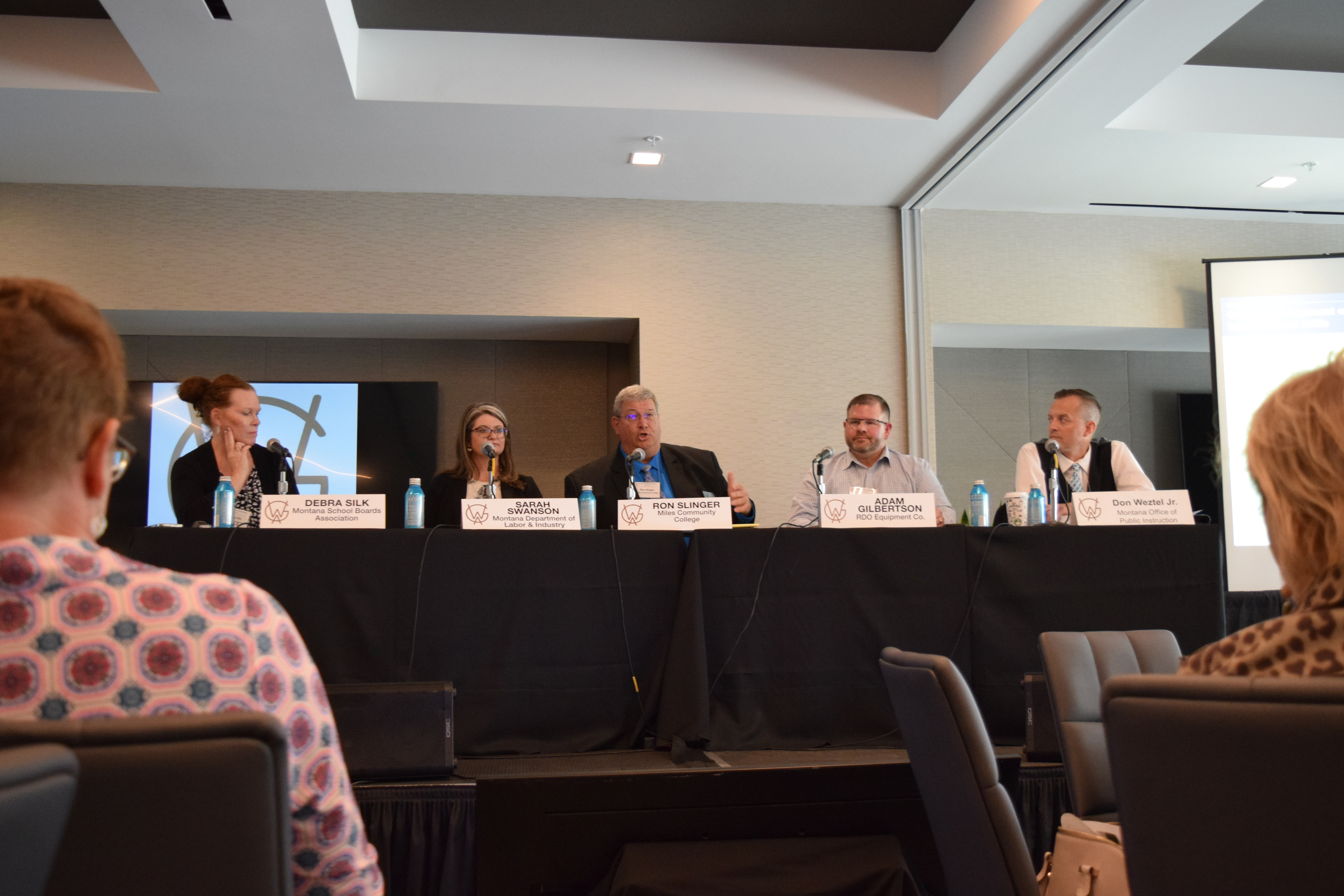
Panelists:
- Adam Gilbertson, Senior Vice President, Field Technology and Innovation, RDO Equipment Co.
- Ron Slinger, President, Miles Community College
- Sarah Swanson, Director of Strategic Engagement, Montana Department of Labor and Industry
- Don Wetzel, Jr., Tribal Student Achievement, Relations and Resiliency Director, Montana Office of Public Instruction
- Moderator: Debra Silk, Associate Executive Director, Montana School Boards Association
Roundtable 4: Preparing Communities for Federal Land Management Funds
While increasing the supply of housing, bolstering the workforce, and improving services in these rural communities are important, it’s just as important to effectively manage the surrounding landscape.
With billions in funding earmarked in the Infrastructure Investment and Jobs Act and the Inflation Reduction Act, experts from Rural Voices for Conservation Coalition, the U.S. Forest Service, New Mexico Highlands University, Montana Department of Natural Resources and Conservation, and Wallowa Resources discussed several initiatives related to resource management and grant funding – such as keystone agreements and the Urban Community Forestry Program – and how rural communities can set themselves up for success in the process of writing proposals.
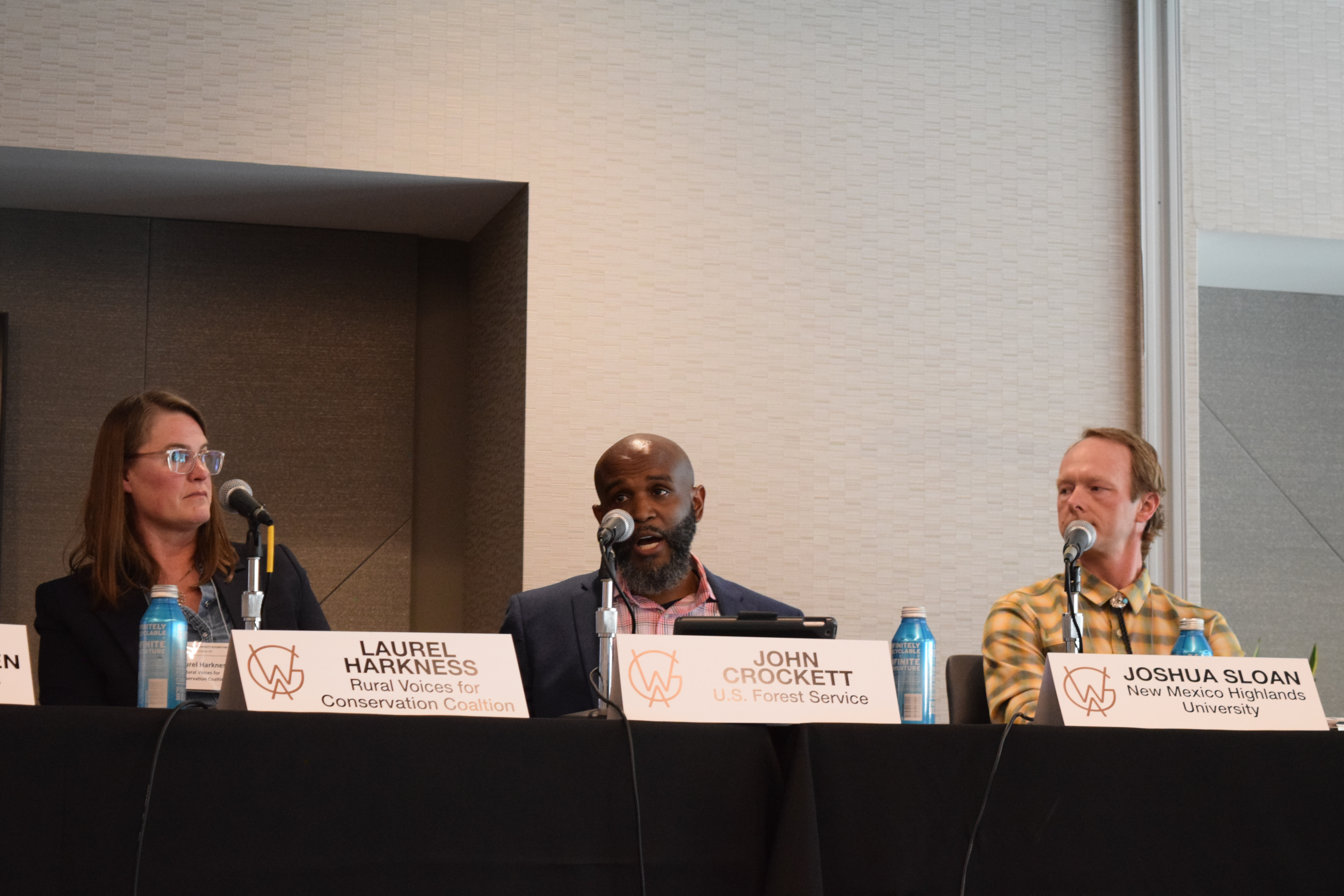
Panelists:
- Laurel Harkness, Coalition Director, Rural Voices for Conservation Coalition
- John Crockett, Associate Deputy Chief for State, Private, and Tribal Forestry, U.S. Forest Service
- Joshua Sloan, Associate Vice President of Academic Affairs: Forestry and the Reforestation Center and Associate Professor of Forestry, New Mexico Highlands University
- Autumn Coleman, Resource Development Bureau Chief, Montana Department of Natural Resources and Conservation
- Moderator: Nils Christoffersen, Executive Director, Wallowa Resources
Roundtable 5: State Strategies for Housing Development
In discussion with Governor Gianforte, the panelists spoke about strategies that their states have deployed to address the housing shortage, including proactive development plans and investments in infrastructure extensions, all of which reduce the friction that exists between state agencies, local municipalities, and builders by affording predictability and consistency.
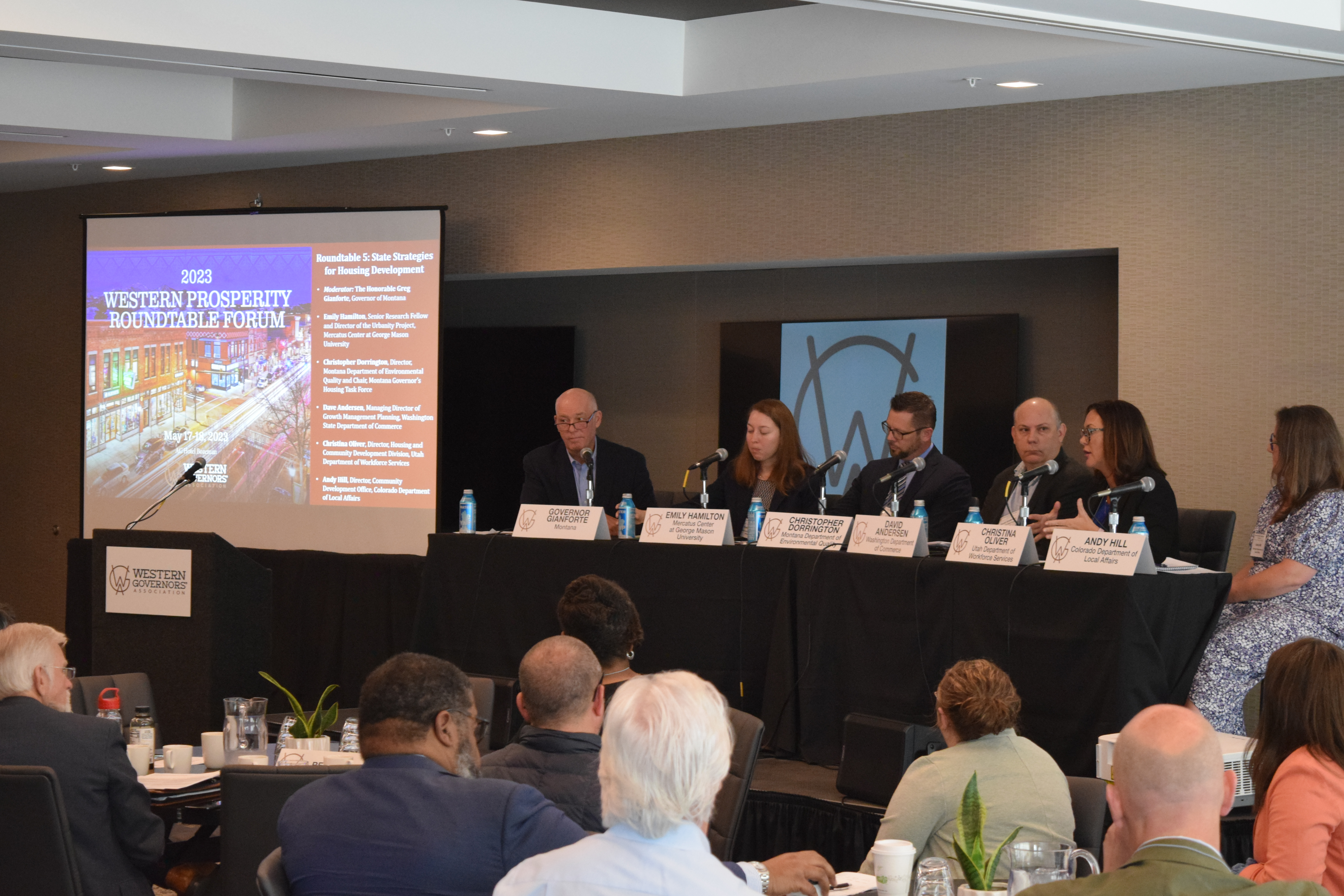
Read the reports developed by Governor Gianforte's Housing Task Force here.
Panelists:
- Emily Hamilton, Senior Research Fellow and Director of the Urbanity Project, Mercatus Center at George Mason University
- Christopher Dorrington, Director, Montana Department of Environmental Quality and Chair, Montana Governor’s Housing Task Force
- Dave Andersen, Managing Director of Growth Management Planning, Washington State Department of Commerce
- Christina Oliver, Director, Housing and Community Development Division, Utah Department of Workforce Services
- Andy Hill, Director, Community Development Office, Colorado Department of Local Affairs
- Moderator: The Honorable Greg Gianforte, Governor of Montana
Roundtable 6: Rebuilding for Post-Disaster Resilience
Panelists from the Federal Emergency Management Agency, U.S. Department of Housing and Urban Development, Montana Disaster, and Emergency Services, Colorado Department of Local Affairs, and the University of Utah also spoke about how rural communities can plan ahead to mitigate the risk of catastrophic natural disasters and improve the post-disaster rebuilding process.
They highlighted challenges such as underinsurance, unpredictable funding for long-term recovery, and inconsistent rules across different federal agencies.
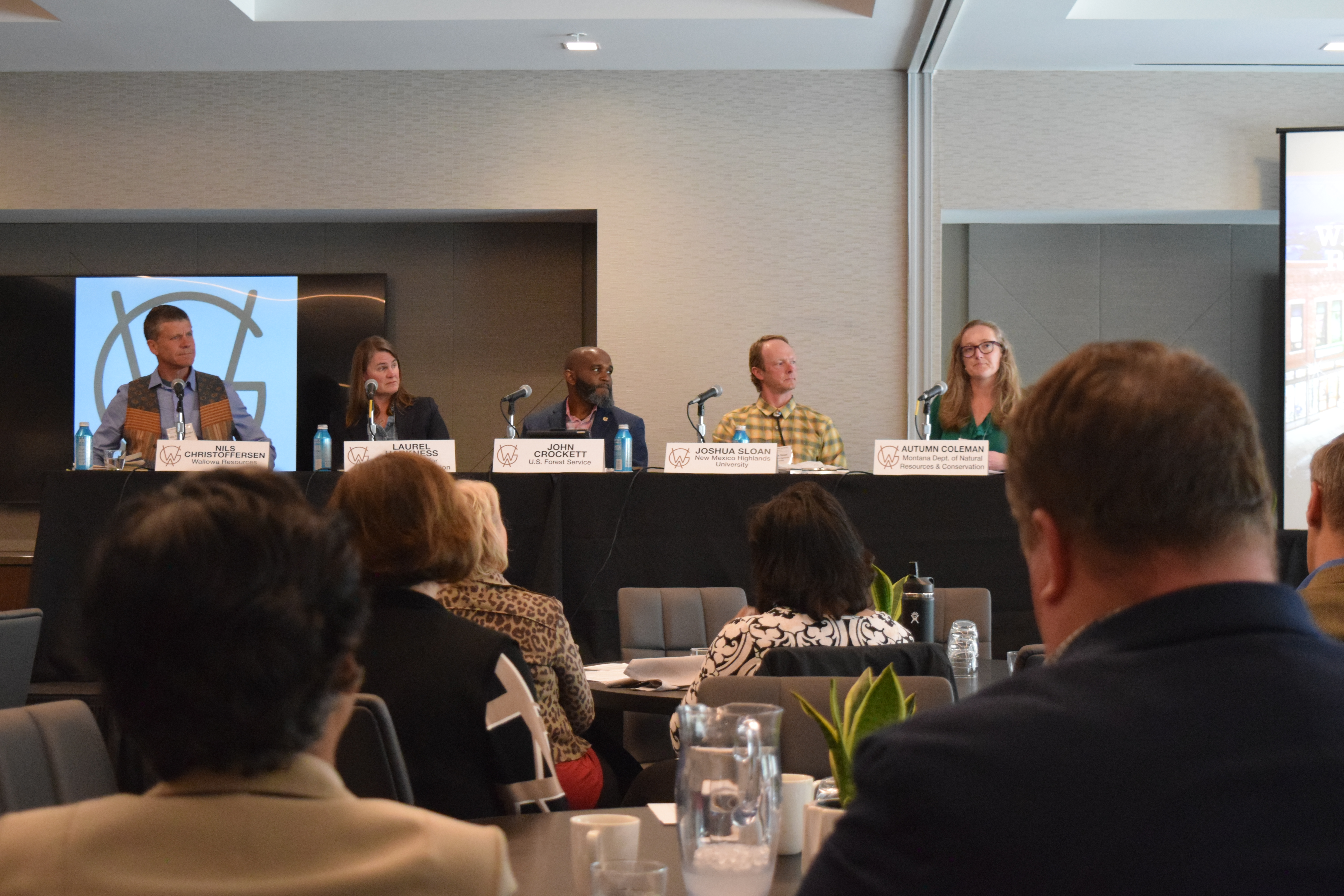
“Preparation is the key to resiliency,” Brooke Conner, the Recovery Support Branch Chief at the Region 8 Recovery Division of the Federal Emergency Management Agency, said. “The best recovery is the one that doesn’t have to take place because we mitigated those hazards ahead of time.”
Panelists:
- Brooke Conner, Recovery Support Branch Chief, Region 8 Recovery Division, Federal Emergency Management Agency
- Tennille S. Parker, Director, Office of Disaster Recovery, U.S. Department of Housing and Urban Development
- Jake Ganieany, Bureau Chief of Response, Recovery, and Mitigation, Montana Disaster and Emergency Services
- David Bowman, Deputy Director, Division of Local Government, Colorado Department of Local Affairs
- Moderator: Divya Chandrasekhar, Associate Professor of City and Metropolitan Planning, University of Utah